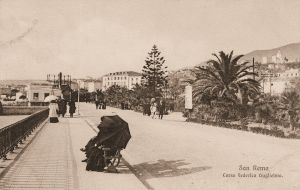The Gas & The Electricity
In 1859 Giuseppe Corradi took office as mayor of Sanremo, who would lead the Municipal Administration at various times until 1874.
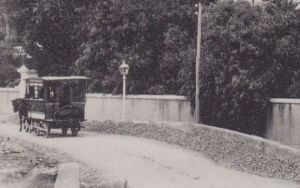 Among the various initiatives taken by his administration there was also the one to establish a new service of city lighting by oil, inaugurated in 1865, which was then replaced by a service of lighting by gas, which was officially activated on October 1st 1870 by virtue of the convention stipulated between the
Among the various initiatives taken by his administration there was also the one to establish a new service of city lighting by oil, inaugurated in 1865, which was then replaced by a service of lighting by gas, which was officially activated on October 1st 1870 by virtue of the convention stipulated between the 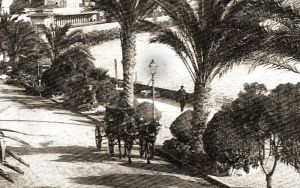 Municipality of Sanremo and the concessionary of Genoa Nicolò Accini on December 31st 1869.
Municipality of Sanremo and the concessionary of Genoa Nicolò Accini on December 31st 1869.
On the basis of this convention, the Municipal Administration granted Mr Accini the exclusive right to establish and maintain the pipes for the gas conduit under the streets and public squares for lighting and heating purposes for a period of thirty-two years until 30 September 1902.
The agreement with Accini, ratified by the Municipal Council at its meeting on 4 January 1870, was however replaced a few years later by an additional agreement with the firm of engineer Emilio Guitton of Marseilles, because in 1873 Accini had sold his company to the firm Gautier of Paris, which had gone bankrupt in 1875.
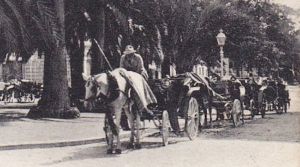 On 5 November 1876, Mayor Stefano Roverizio granted Mr Guitton the right to manage the public and private operation of gas lighting in the town of San Remo for a total period of forty years.
On 5 November 1876, Mayor Stefano Roverizio granted Mr Guitton the right to manage the public and private operation of gas lighting in the town of San Remo for a total period of forty years.
The convention with Mr Guitton was then ratified by the Town Council, with some slight additions and modifications, in the session of the following 27th November and finally approved by the Provincial Deputation of Porto Maurizio with the decree of 3rd January 1877.
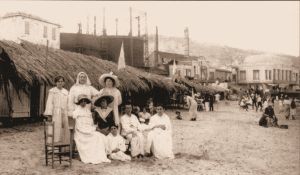
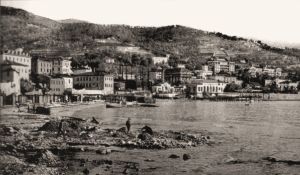 To this end, a gasometer was built after the Stabilimento Bagni di Mare (which was later to become the Morgana) and where the Oberdan gardens were later to be built, and the furnaces that powered it were built using the existing equipment belonging to a ceramics factory, a Poterie, with a more than obvious chimney.
To this end, a gasometer was built after the Stabilimento Bagni di Mare (which was later to become the Morgana) and where the Oberdan gardens were later to be built, and the furnaces that powered it were built using the existing equipment belonging to a ceramics factory, a Poterie, with a more than obvious chimney.
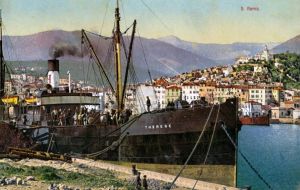 These furnaces were fed by the coal that arrived at the port via the coal ships.
These furnaces were fed by the coal that arrived at the port via the coal ships.
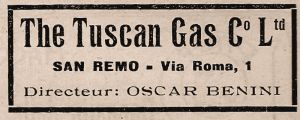
However, after only twenty years, in 1897, the Asquasciati administration, after a long dispute, decided that the definitive management of public and private gas lighting was to be entrusted to "The Tuscan Gas Company Limited", based in Via Roma, which continued the activity and moved the gasometers to Via Goethe in 1912.
In another victorious dispute, the mayor Mombello administration freed the municipality from the Tuscan monopoly with a ruling that recognised the right to establish a different lighting system for both the public and private citizens. In 1930 the company was absorbed by Italgas.
Electric lighting
On 3rd November 1897, the Municipal Council granted the "Società Cooperativa per l'Illuminazione Elettrica" the right to supply electrical energy, granting it exemption from the payment of the duty on the import of coal necessary for production.
However, the Electric Lighting was slow to take off, so much so that in 1900 the Municipal Administration had to spend 1,534.80 lire to install 30 new gas lanterns in various parts of the town.
Fortunately, in the meantime, on 12 March 1884, the Marsaglia Aqueduct was inaugurated, bringing a considerable flow of water to the city.
The municipalisation of the aqueduct, which took place in 1910 with the creation of the Azienda Autonoma Municipalizzata per l'Acquedotto e l'Illuminazione Elettrica (AAMAIE), led to a more constant supply of electricity, with the start-up of two hydroelectric groups using the water for this purpose.
From the outset, therefore, the company was divided into the two services that still make up the company today, i.e. waterworks and electricity.
The subsequent evolution of its history was characterised by the continuous adaptation of its structures to meet the increased demand from users. The process of expansion and renewal of the electrical system followed, over time, a path not unlike that of other cities.
The original Electricity System initially had a limited capacity which, due to its interaction with the water system, was destined to decrease as water consumption increased due to the natural development of the city.
Subsequently, the development of this service was characterised by a progressive increase in installations, in order to cope with the increased consumption and energy needs for public lighting in the central area of the city.
Around the mid-1920s, however, the company ceased to be self-sufficient in energy, and the problem of street lighting in the peripheral areas remained open.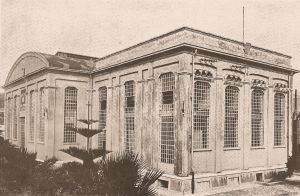 In order to meet the demand for energy from the waterworks for lifting water, an agreement was made with DERPO to supply the necessary electricity, until, towards the end of the 1920s, the Arma di Taggia thermoelectric power station was built, which, with its 30 transformer rooms, was the basis for the company's first major development in the electricity sector.
In order to meet the demand for energy from the waterworks for lifting water, an agreement was made with DERPO to supply the necessary electricity, until, towards the end of the 1920s, the Arma di Taggia thermoelectric power station was built, which, with its 30 transformer rooms, was the basis for the company's first major development in the electricity sector.
In the mid-1930s, with the takeover of DERPO by C.I.E.L.I., a subsidiary of the Edison Group, an agreement was signed by which the company secured an unlimited supply of electricity at lower prices.
In the years following the Second World War, after the destruction suffered by the most important structures of the distribution system, a progressive obsolescence of the electricity sector's installations began to appear.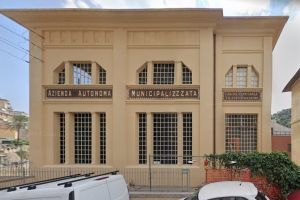 In the 1950s and 1960s, the primary transformers and the entire network of secondary transformer substations were upgraded.
In the 1950s and 1960s, the primary transformers and the entire network of secondary transformer substations were upgraded.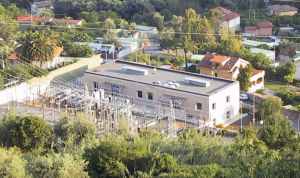 Since then, with the energy to be supplied directly from the ENEL plants, the increase in demand could be effectively dealt with, especially after the 132/15 kv transformation station in Sanremo at Borgo Tinasso became operational in 1991.
Since then, with the energy to be supplied directly from the ENEL plants, the increase in demand could be effectively dealt with, especially after the 132/15 kv transformation station in Sanremo at Borgo Tinasso became operational in 1991.
As part of the Electricity Plant Service, the current medium voltage electricity distribution plants are about 160 km long and are structured on overhead lines and 15 kV underground cables.
The medium voltage lines feed 186 transformation cabins with a total installed power of 45 MVA.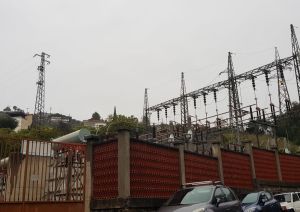 The 220 and 380 V low-voltage network branches off from the substations and is about 500 km long, serving more than 32,000 domestic, commercial and floricultural users, municipal services, waterworks lifting plants and about 9,000 lighting points for the public lighting service managed by the company on behalf of the municipality.
The 220 and 380 V low-voltage network branches off from the substations and is about 500 km long, serving more than 32,000 domestic, commercial and floricultural users, municipal services, waterworks lifting plants and about 9,000 lighting points for the public lighting service managed by the company on behalf of the municipality.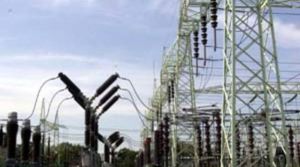
The maximum power absorbed by the utility is about 22,000 kW and the energy supplied is about 100 million kWh per year.
 A.M.A.I.E., no longer Municipalised but now A.M.A.I.E. S.p.A. S.p.A., thus losing an "em", has recently launched a general programme for the renewal and upgrading of its plants aimed at technical modernisation of the network, adapting it to the needs of the customer, encouraging the sale of energy in the city centre, electrification of the hillside areas and, more generally, improving the quality of the service.
A.M.A.I.E., no longer Municipalised but now A.M.A.I.E. S.p.A. S.p.A., thus losing an "em", has recently launched a general programme for the renewal and upgrading of its plants aimed at technical modernisation of the network, adapting it to the needs of the customer, encouraging the sale of energy in the city centre, electrification of the hillside areas and, more generally, improving the quality of the service.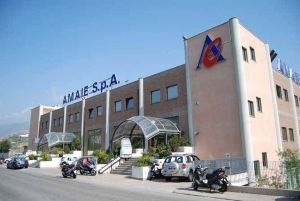 This programme was conceived in light of the technical-economic problems arising from the coexistence and overlapping of the AMAIE and ENEL distribution
This programme was conceived in light of the technical-economic problems arising from the coexistence and overlapping of the AMAIE and ENEL distribution 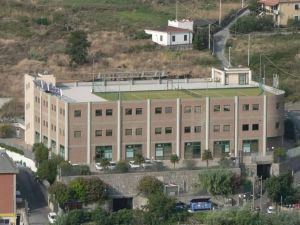 networks in their respective areas of influence, and in relation to the future socio-economic and urban planning of the city of Sanremo, as well as in light of the possible development and expansion of the company's catchment area, in application of the most recent legislative provisions on the liberalisation of the electricity market (Legislative Decree No. 75 of 16 March 1998, the so-called "Bersani Decree").
networks in their respective areas of influence, and in relation to the future socio-economic and urban planning of the city of Sanremo, as well as in light of the possible development and expansion of the company's catchment area, in application of the most recent legislative provisions on the liberalisation of the electricity market (Legislative Decree No. 75 of 16 March 1998, the so-called "Bersani Decree").
In addition, A.M.A.I.E. has recently been dealing with other services, such as urban hygiene and the Flower Market.
(sources: elaboration on texts by various authors, by Andrea Gandolfo, from the AMAIE website; images from private archives and the Web)





